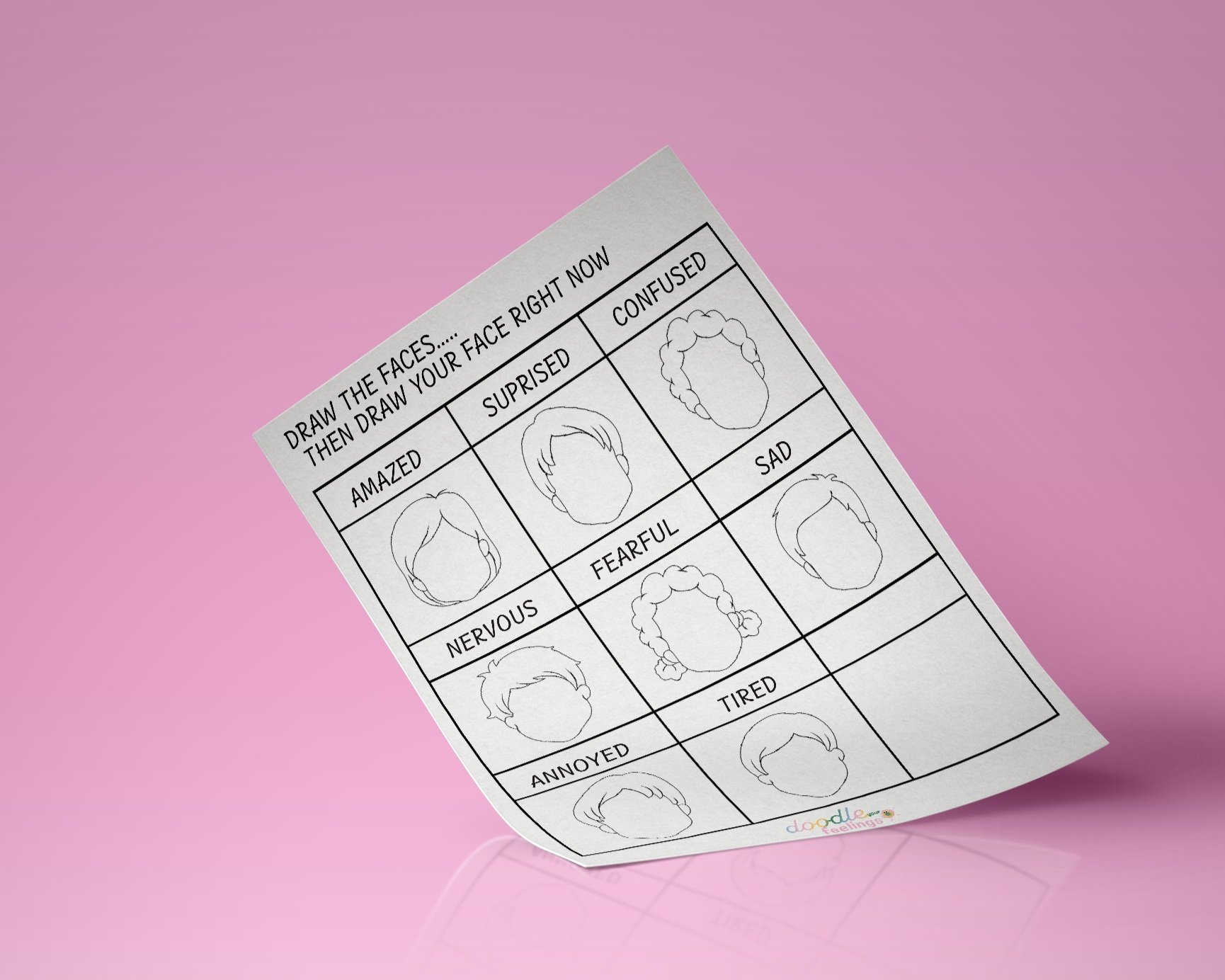Goal: To help children identify, express, and reflect on various emotions through facial expression, drawing and creative self-awareness.
For Parents
This activity encourages emotional literacy by helping your child visually explore how different emotions appear on the face. It opens up conversation about their feelings, supports empathy development, and helps them recognise emotions in themselves and others.
Instructions (To Read Aloud to Your Child)
Let’s look at the emotion words below. Imagine how a person’s face might look when they feel each emotion.
In each box, draw a face showing that emotion. Focus on details like the eyes, eyebrows, and mouth.
When you’re done, draw a picture of your face right now in the last box.
We’ll talk about each emotion together once your drawings are done.
Emotion Faces Might look like…
Amazed: Wide eyes, open mouth
Surprised: Raised eyebrows, big eyes
Nervous: Small frown, worried eyes
Fearful: Wide eyes, clenched teeth
Sad: Downturned mouth, tears maybe
Annoyed: Furrowed eyebrows, tight lips
Tired: Droopy eyes, yawning mouth
Now… Draw YOUR Face Right Now!
Prompt: How do you feel right now? Can you draw your own face to match that feeling?
Conversation Starters for Parents
“What made you choose that expression for each emotion?”
“Have you felt this way recently?”
“How do you show your feelings when you're with friends or family?”
“Do you think people can hide how they feel? How?”
Extension Activity
Repeat this activity on different days to help track and talk about your child's emotional growth over time. You can create a mini "Feelings Sketchbook" to save their drawings each week!

